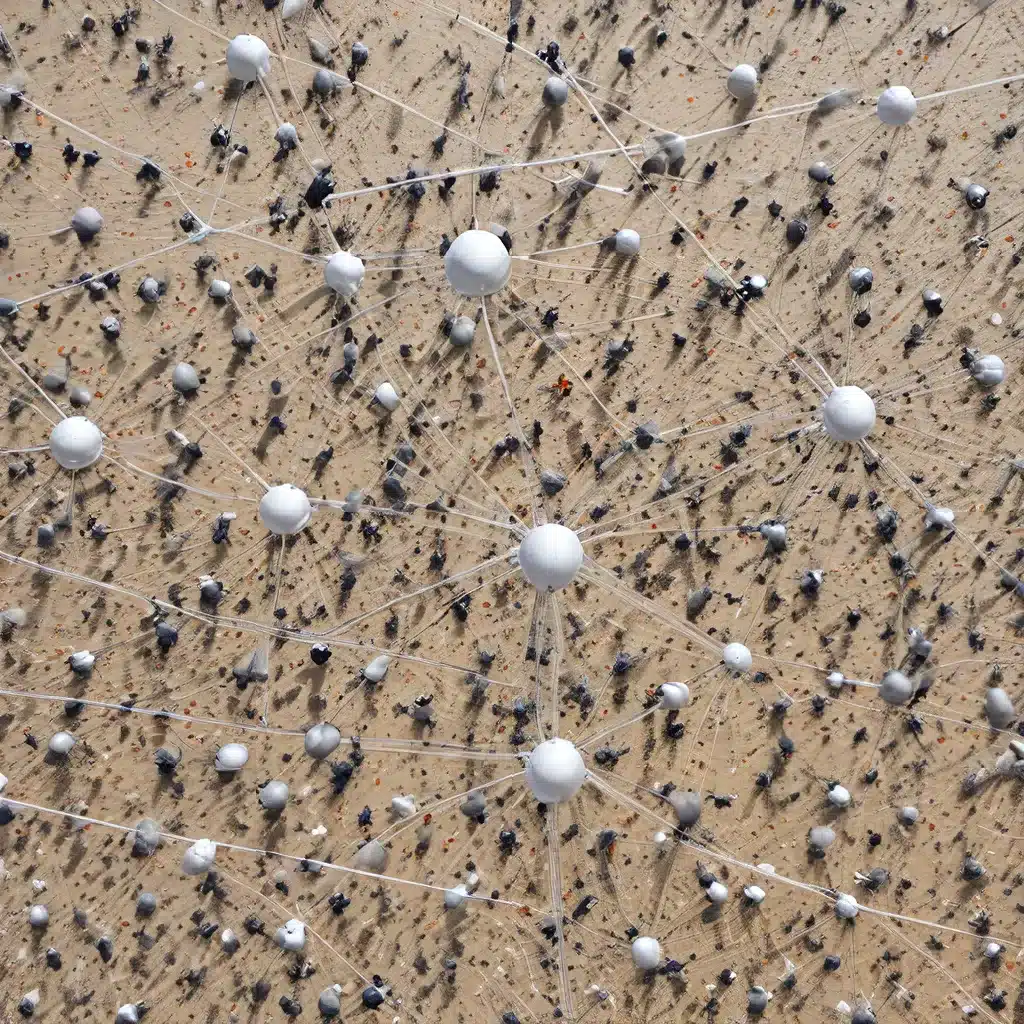
The Rise of Sensor Networks and IoT
In the dynamic landscape of emerging technologies, sensor networks and the Internet of Things (IoT) have emerged as pivotal driving forces, transforming the way we interact with the world around us. These interconnected systems, comprising vast arrays of sensors, devices, and communication protocols, have unlocked unprecedented opportunities for data-driven insights, enhanced automation, and optimization across a wide spectrum of industries.
As the demand for real-time, granular information continues to grow, the concept of sensor swarms has gained significant traction. These distributed networks of autonomous sensors, strategically deployed and coordinated, hold the promise of revolutionizing how we perceive and respond to the physical environment. By harnessing the collective intelligence of sensor swarms, organizations can achieve enhanced coverage, improved data accuracy, and more efficient resource utilization.
Designing Effective Sensor Swarms
The design of effective sensor swarms requires a multifaceted approach, balancing technological advancements, operational considerations, and environmental factors. From the outset, the selection of appropriate sensing modalities and communication protocols is crucial, ensuring the sensor network can capture the necessary data and seamlessly transmit it to central hubs or decision-making platforms.
Researchers have explored various strategies for coordinating sensor swarms, leveraging techniques such as flocking algorithms, swarming behaviors, and decentralized decision-making. By emulating the natural behaviors of biological swarms, these innovative approaches enable sensors to adaptively adjust their positions, coverage patterns, and data collection processes in response to dynamic environments.
Optimizing Sensor Placement and Coverage
One of the key challenges in sensor swarm design is the strategic placement and deployment of sensors to ensure comprehensive coverage and monitoring of the target area. Computational modeling and simulation tools have become invaluable in this regard, allowing researchers and engineers to assess the performance of various sensor configurations and identify optimal placement strategies.
Emerging sensor fusion techniques further enhance the effectiveness of sensor swarms, enabling individual sensors to collaborate and collectively build a more robust and accurate understanding of their surroundings. By integrating data from multiple sensing modalities, sensor swarms can overcome the limitations of individual sensors and provide a more holistic view of the environment.
Addressing Challenges in Sensor Swarm Coordination
Despite the numerous benefits of sensor swarms, coordinating these distributed systems poses unique challenges that must be addressed. Communication and synchronization between sensors are critical, requiring the development of robust networking protocols and data management strategies. Factors such as energy efficiency, fault tolerance, and security must also be carefully considered to ensure the long-term viability and resilience of sensor swarm deployments.
Researchers have proposed various approaches to enhance the energy management of sensor swarms, including the use of energy harvesting technologies, duty cycling, and power-aware routing algorithms. These strategies aim to extend the operational lifetime of sensor networks and ensure continuous data collection without sacrificing performance.
IoT Applications Leveraging Sensor Swarms
The versatility of sensor swarms has enabled a wide range of IoT applications across diverse industries, each leveraging the unique capabilities of distributed sensing to address specific challenges.
Environmental Monitoring and Disaster Response
One prominent application of sensor swarms is environmental monitoring. By deploying sensor-equipped drones, autonomous underwater vehicles, or ground-based sensor nodes, organizations can gather real-time data on parameters such as air quality, water conditions, wildlife activity, and weather patterns. This information can inform critical decision-making processes, support disaster response efforts, and enable more proactive environmental management.
Smart Cities and Infrastructure Optimization
In the realm of smart cities, sensor swarms play a crucial role in urban planning, traffic management, and infrastructure optimization. Sensors embedded in roads, bridges, and buildings can monitor structural integrity, traffic flow, and energy consumption, enabling city authorities to implement data-driven maintenance strategies and resource allocation.
Industrial Automation and Predictive Maintenance
Within the industrial sector, sensor swarms are revolutionizing automation and predictive maintenance. By strategically positioning sensors across manufacturing floors, production lines, and machinery, organizations can gather valuable data on equipment performance, operational efficiency, and potential failures. This information can be used to optimize production workflows, schedule preventive maintenance, and minimize unplanned downtime.
Healthcare and Telemedical Applications
In the healthcare domain, sensor swarms are paving the way for remote patient monitoring, disease management, and telemedical services. Wearable devices, implanted sensors, and distributed monitoring stations can collect vital health data, enabling healthcare providers to deliver personalized care, detect early warning signs, and empower patients to take a more active role in their well-being.
The Future of Sensor Swarms and IoT
As the integration of sensor networks and IoT technologies continues to evolve, the potential for sensor swarms to transform various industries is boundless. Advancements in artificial intelligence and machine learning will further enhance the autonomous decision-making capabilities of sensor swarms, enabling them to adapt to dynamic environments and provide real-time insights** with unprecedented precision.
Moreover, the convergence of sensor swarms with emerging technologies, such as 5G, edge computing, and blockchain, will unlock new frontiers in data processing, secure data sharing, and decentralized infrastructure. These synergies will pave the way for even more innovative IoT applications and cross-industry collaborations, driving the digital transformation of our world.
Ultimately, the rise of sensor swarms underscores the pivotal role that distributed sensing and coordinated intelligence will play in shaping the future of technology, decision-making, and our understanding of the physical world. As we continue to harness the power of sensor networks and IoT, the possibilities for improved efficiency, enhanced sustainability, and transformative breakthroughs are truly limitless.